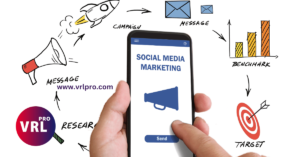In today’s digital age, businesses are constantly seeking innovative ways to engage with their target audience and stand out from the competition. One technology that has gained significant attention in recent years is augmented reality (AR). Augmented reality is a technology that overlays digital content onto the real world, creating an immersive and interactive experience for users. This technology has the potential to revolutionize marketing strategies and provide unique opportunities for businesses to connect with their customers.
One of the key advantages of augmented reality in marketing is its ability to enhance customer engagement. Traditional marketing methods often rely on static images or videos to convey a message. With AR, businesses can create interactive experiences that allow customers to actively participate in the marketing campaign. For example, a furniture retailer can use AR to allow customers to visualize how a particular piece of furniture would look in their own home. This not only provides a more engaging experience but also helps customers make more informed purchasing decisions.
AR can also be used to create memorable and shareable experiences. By integrating AR into marketing campaigns, businesses can create unique and interactive experiences that leave a lasting impression on customers. For example, a cosmetics brand can use AR to allow customers to virtually try on different makeup products, enabling them to see how they would look without actually applying the products. This not only creates a fun and engaging experience but also encourages customers to share their virtual makeovers on social media, generating valuable word-of-mouth marketing.
Furthermore, augmented reality can provide businesses with valuable data and insights. By tracking user interactions and behaviors within an AR experience, businesses can gain a deeper understanding of their customers’ preferences and interests. This data can then be used to personalize future marketing campaigns and improve overall customer satisfaction. For example, a clothing retailer can analyze the data collected from an AR fitting room experience to better understand which styles and sizes are most popular among their customers.
Another benefit of leveraging augmented reality for marketing purposes is its ability to break geographical barriers. With AR, businesses can reach a global audience without the need for physical presence. By creating AR experiences that can be accessed through smartphones or other devices, businesses can engage with customers from anywhere in the world. This opens up new opportunities for businesses to expand their reach and tap into new markets.
However, it is important for businesses to approach augmented reality marketing with a strategic mindset. While AR has the potential to enhance marketing efforts, it is crucial to ensure that the technology is used in a way that aligns with the brand and resonates with the target audience. AR should not be used simply for the sake of being trendy or innovative, but rather as a tool to enhance the overall customer experience and deliver value.
In conclusion, augmented reality presents exciting opportunities for businesses to transform their marketing strategies. By leveraging AR, businesses can create engaging and interactive experiences, generate valuable data and insights, create memorable and shareable moments, and expand their reach beyond geographical boundaries. However, it is important for businesses to approach AR marketing with a strategic mindset and ensure that the technology is used in a way that aligns with their brand and resonates with their target audience. With careful planning and execution, augmented reality has the potential to revolutionize the way businesses connect with their customers.




